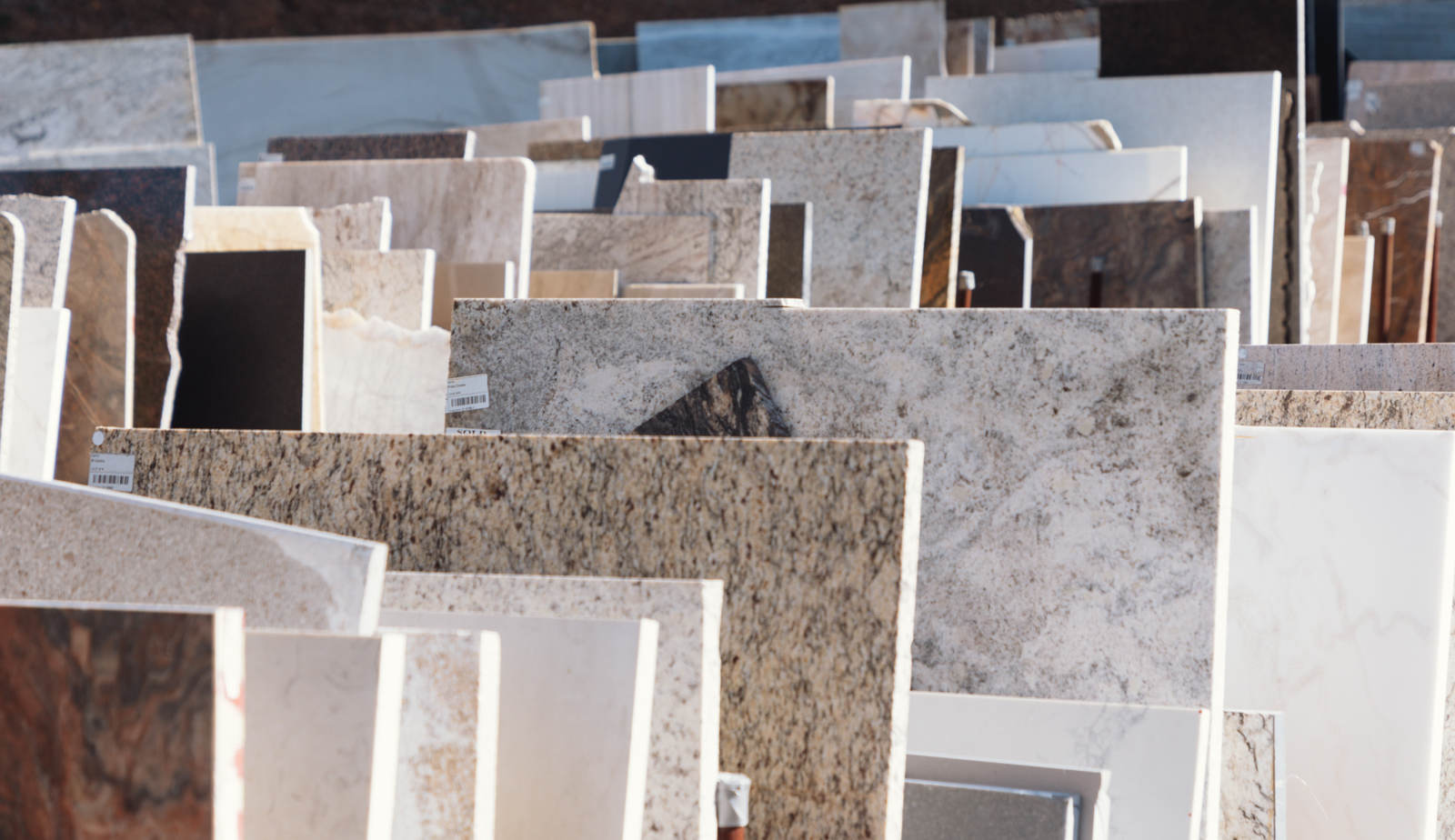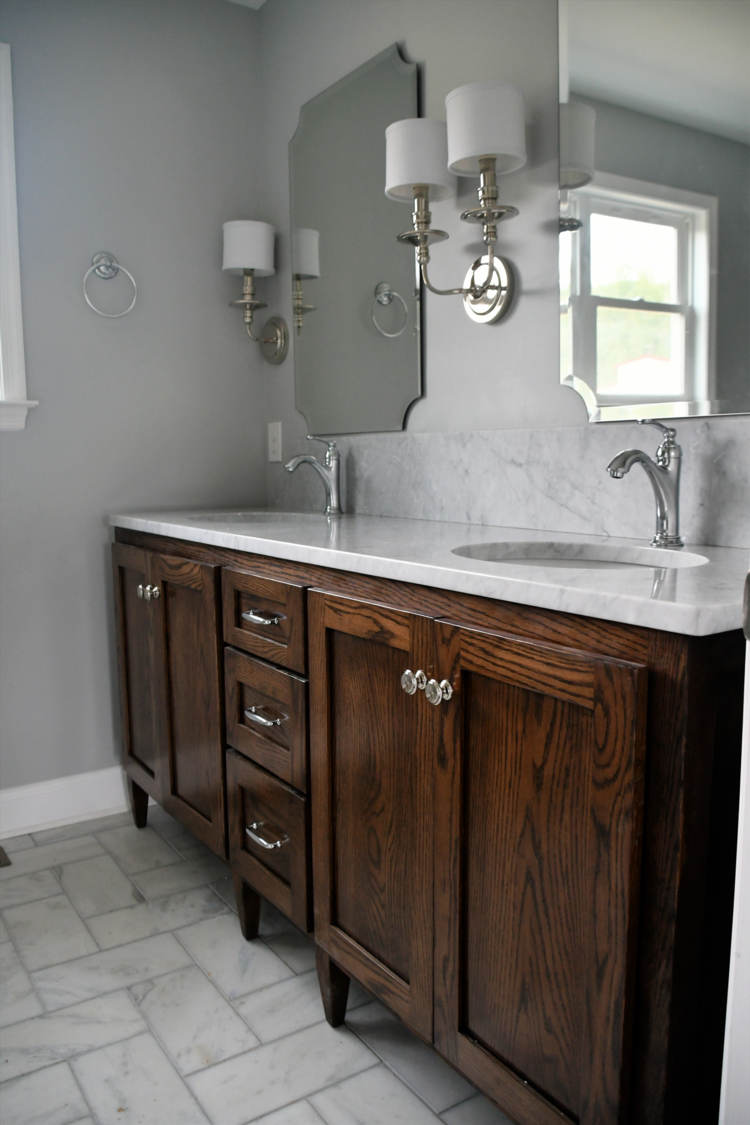Granite, Marble, and Quartz Remnant Slabs

Everything You Should Know About These “Leftover” Pieces
Don’t let the name fool you - just because granite, marble, and quartz remnant slabs are the unused pieces from a larger cut, that doesn’t mean they’re lower quality or defective parts. These leftover remnant slabs are an economical and environmentally-friendly way to upgrade your house and are exactly the same quality as the bigger pieces. So today, we’ll be going through everything you should know about these often overlooked stones and hopefully dispel any concerns you had about using them!
What exactly are remnant slabs?
Remnant slabs are smaller pieces of granite, marble, quartz, or other stones that are leftover after a larger piece is cut. This means that remnant slabs are literally cut from the same cloth stone as their more expensive countertop cousins. Think of it this way, when you’re modeling your house and you order a huge countertop for your kitchen island, that beautiful marble slab is cut to the exact size you need. Afterwards, manufacturers will likely have fairly large size pieces left over that are still perfectly usable. Remnant slabs are a great way for stone supplies to make the most out of the resources available to them, which ultimately leads the DIY home renovator to pay lower costs. This means that both your pocket and the planet will be happy.
What can remnant slabs be used for?
Typically, remnant slabs will be used for anything in your house that needs a smaller-sized stone furnishing. One of the most common uses of granite, marble, and quartz remnant slabs is for bathroom vanities. Since they’re usually much smaller than your average countertop, many times the leftover stone can find a second life here. There are many other uses for remnant slabs for even smaller sections, as well. For example, fireplace adornments and surrounds, shower ledges and seats, and any other kind of furniture piece can be crafted using remnant slabs. This means that if you can find the perfect leftover slab, you can remodel your bathroom or fireplace for a fraction of the price. If you’re the artsy type, you can also use remnant slabs for a variety of crafts and decorations. Cutting boards and decorative items are frequently made out of thin remnant slabs, for example.

Pros to using granite, marble, and quartz remnants
There are several advantages to using these “leftover” stones. Even though they are considered to be unwanted pieces from other projects, they’re far from being waste. Here are just a couple of the pros to using granite, marble, a d quartz remnants:
1. Lower prices
The most obvious benefit is the fact that these costly materials will come at a discounted price. This happens because remnant slabs are lowering the amount of waste a company produces and, instead, the “unwanted” products are reused for something else. For example, if a previous homeowner wanted to cut a couple countertops out of a large piece of granite, it’s likely that there will be some leftover pieces. That’s where you come in and use the remaining pieces and make yourself a great vanity to give your bathroom a new look. Considering manufacturers will sell these as a way to reduce their own waste, those savings can trickle down into your pocket. In fact, most manufacturers and stone fabricators will try to strategically plan their cutting in order to reduce their waste as much as possible, which is great for both the seller and the buyer.
2. Environmentally friendly
Naturally, reducing your waste this way is a great way to make a positive impact on the environment. While some stones can be engineered, many natural stones come straight from the ground. Excavating, transporting, and storing this non-renewable resource came come with a big carbon footprint, which means that remnant slabs are a great way to do your part to help Mother Nature (while still finishing up your renovation).
Cons to using granite, marble, or quartz remnants
While using these stone remnants is a great way to save money and help the environment, nothing is perfect. There are a couple downsides to using granite, marble, and quartz remnants:
1. Limited availability
The biggest issue with these stone remnants is that you might not actually find enough remnants to cover your whole project. Maybe your fabricator doesn’t have enough remnants in stock from the exact same stone that you wanted. Or maybe they don’t have any remnants that are big enough in one dimension for what you’re looking for. This means you might need to go and shop around until you find a store that has the type of stone remnant you want - and enough of it. But of course, this makes sense when we consider what these stone remnants are. If they are the leftover cuts, then naturally they might not always have these more affordable byproducts in stock.
2. Inconsistent Colors
If your project requires more than one remnant piece, consistency of color may be an issue. Remnants can be cut from different slabs or even stone blocks. As a result, multiple remnant pieces of the same stone product may have a visible color or pattern differences. This can be concerning if you are trying to have matching pieces of the project such as a countertop with a backsplash.
Trash or treasure?
Many people end up treating granite, marble, and quartz remnant slabs with a bit of apprehension. To be fair, the idea of using the unwanted “waste” from other construction projects might seem unappealing to some. In this case, however, this type of treatment is completely unwarranted. Ultimately, remnant slabs may be waste products, but they remain equally as high-quality, durable, and beautiful as the larger cuts from a previous project. So the next time you’re considering renovating and you need smaller sections of stone, using a remnant slab may be a pocket-saving solution you need.